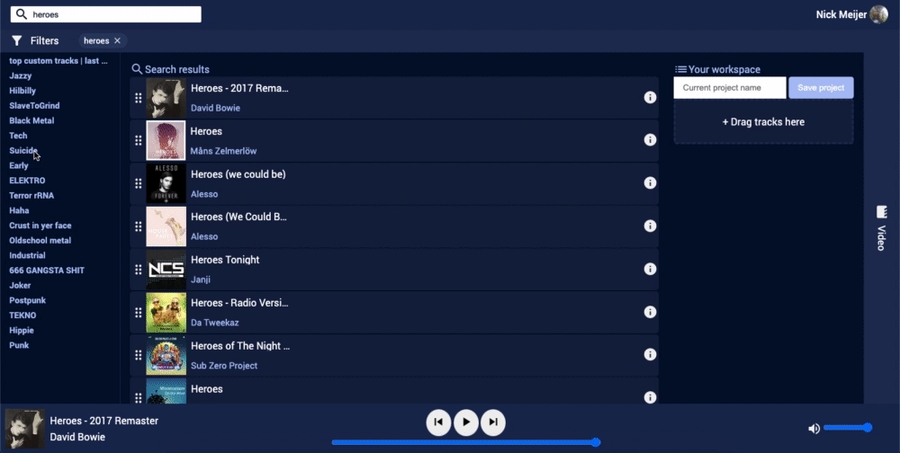4.1 - Projects page
Introduction
On the leftside of the dashboard a list with Spotify playlists of the user is displayed: 
Users can open a playlist by clicking on it 
How it works
An eventlistener is attached to each project link:
links.forEach(link => {
link.addEventListener('click', function(event){
...
})
})
})What happens on the click events:
// the default behaviour of the anchor tag is caught of
event.preventDefault()
// href attribute if each anchor is caught, which consists of the page it is referring to and the playlist id
const url = link.getAttribute('href')
// then a fetch to our own server is made with the id and token passed, these are used on the server to fetch the right playlist the Spotify api
fetch(url + '?query=' + link.id + '&async=true' + '&token=' + token + '&id=' + link.id)
.then(res => res.text())
.then(html => {
// the server than renders the component, with the right data and sends this back to the client
// the project page element is now filled with this component and set to display block
document.querySelector('.project-page').innerHTML = html
section.style.display = 'block'
// if the back button is clicked the element is set back to display none
const closeButton = document.querySelector('.close-button')
closeButton.addEventListener('click', () => {
section.style.display = 'none'
})What happens on the server:
async function projectsRoute(req, res) {
let options = {
// url: `https://api.spotify.com/v1/search?q=${artist}&type=track%2Cartist&market=US&limit=10&offset=5`,
method: 'GET',
headers: { Authorization: 'Bearer ' + req.query.token },
};
// gets the playlist metadata from the spotify api(title)
const playlist = await getDataFromSpotfy(
`https://api.spotify.com/v1/playlists/${req.query.id}`,
options
);
// gets the playlist tracks from the spotify api
const playlistTrackList = await getDataFromSpotfy(
`https://api.spotify.com/v1/playlists/${req.query.query}/tracks`,
options
);
// loops over playlist items and only returns tracks
const trackList = playlistTrackList.items.map((track) => {
return track.track;
});
// renders the project component with the right data
res.render(__dirname + '/view/components/project.ejs', {
trackData: trackList,
token: req.query.token,
playlistData: playlist,
});
}Last updated
Was this helpful?